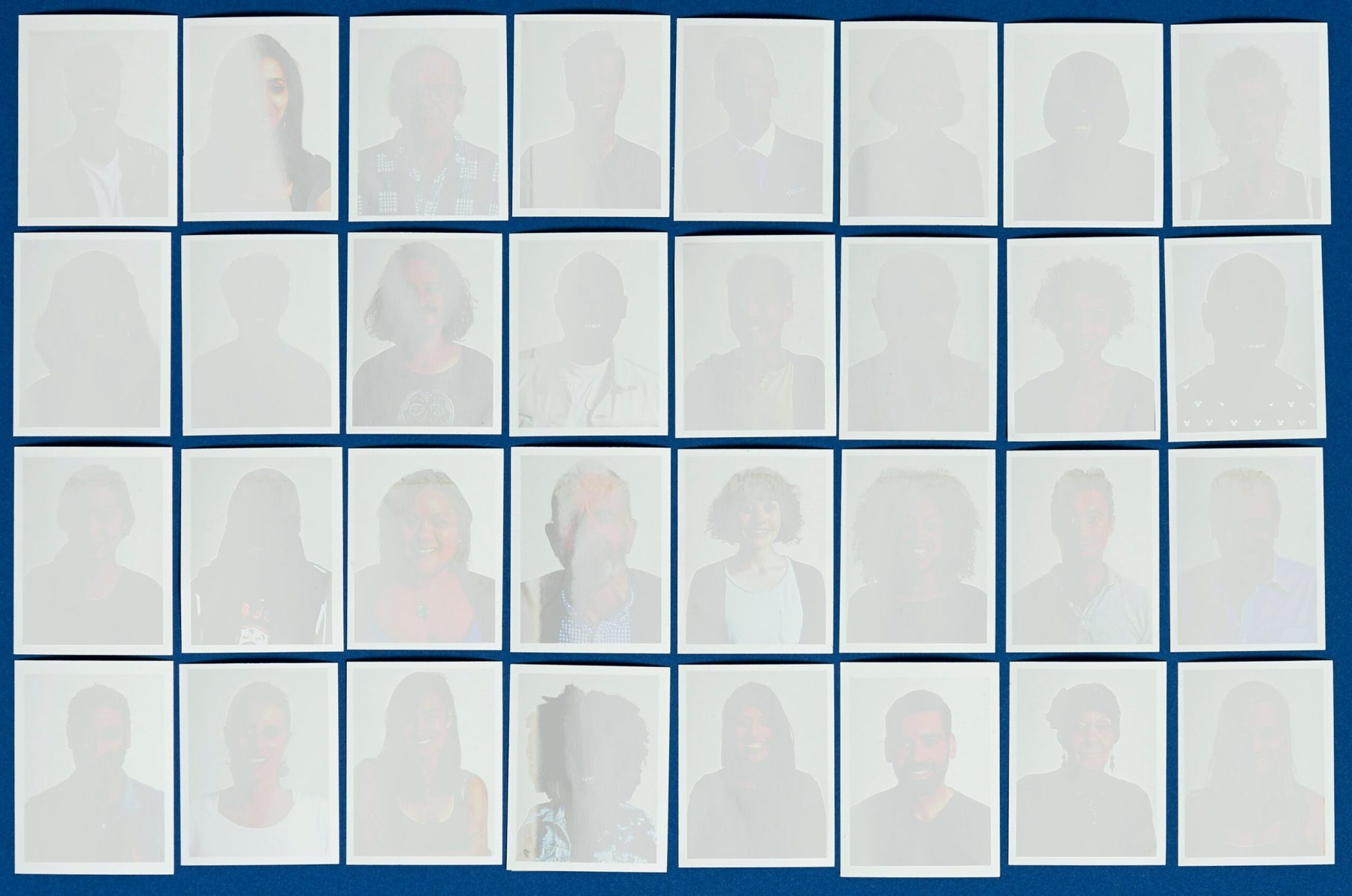Your trusted source for contextualizing the news. Sign up for our daily newsletter.
Sarah Abboud has been researching the health needs of LGBTQ+ Arab American men for the past two years. Her interviews found that their mental health outcomes were “really poor” due to the combined stresses of immigrant, ethnic and queer identity.
Abboud, who is an assistant professor of nursing at University of Illinois at Chicago, wants to adapt an existing program to fit these men’s needs, with the aim of improving their sexual and mental health outcomes. She applied for funding from the National Institutes of Health, drawing on her qualitative research. But her application was rejected.
“The reviewers were like, this is not a significant amount of like individuals to show that this is an important work to be done,” Abboud said. Only two peer-reviewed data-based published studies have looked into LGBTQ+ Arab or Middle Eastern and North African (MENA) populations.
While there is no official consensus on which countries are included in the MENA or similar South West Asian and North African (SWANA) grouping, the area spans the intersection of Africa, Europe and Asia, and labels for the region have often changed at the whim of geopolitics.
That lack of data stems from how the United States officially counts people: On the decennial census, which aims to provide an accurate tally of the country’s population, there is no category to tabulate people with MENA ancestry. Instead, instructions tell them to identify as White. This means that public health research on MENA Americans in particular is limited, because much of the funding earmarked for minority groups is inaccessible to them.
Women and LGBTQ+ MENA Americans are invisible twice over
Women and LGBTQ+ people are understudied in public health, and combined with a lack of accurate racial categories to specifically count MENA populations this group of people is often rendered invisible twice over. While research indicates that MENA immigrants tend to have lower incomes, resources allocated to health disparities aren’t available to them because they are classified as White. Civil rights and discrimination cases are more difficult to prove when the group isn’t legally classified as a minority, except in limited cases.
“Data is so important to every aspect of people’s health and well-being in the United States, because usually, data and information is how funding gets allotted and measured,” said Nadia Abuelezam, associate professor of nursing at Boston College and an expert on Arab American public health. “And so if we don’t actually know what the needs of particular groups are, we can’t actually ask for funding or get funding to address those needs.”
Women and LGBTQ+ people are already underrepresented in public health research, so not accurately capturing someone’s race “amplifies the issue in these particular populations,” Abuelezam said.
There are clear, specific needs MENA communities have. Abuelezam’s research has shown that pregnant Arabs are less likely to get the prenatal care they need, but the underlying cause is unclear. Abboud’s research on domestic violence prevention has shown clear culturally specific concerns: Gendered Islamophobic stereotypes that paint men as aggressive terrorists and women as meek or submissive are a barrier to resources.
“A lot of women are not able to seek services because they do not want to necessarily reinforce some of those stereotypes if they experience violence within their communities,” Abboud said. “Other women talk about not being able to also find the services that are appropriate to them, whether it’s because of family values, or religious values, or even language related services.”
Erik Adamian is the board president of GALAS LGBTQ+ Armenian Society, a nonprofit based in Los Angeles. He said one consequence of a lack of population data is that it gives the appearance of a small community. It can also put a damper on funding applications, as without data on the MENA community at scale, he said “we haven’t been able to enhance our ask, we haven’t been able to enhance the proposals that we put out there.”
What does MENA mean?
Middle Eastern and North African (MENA) and South West Asian and North African (SWANA) are largely interchangeable terms, with SWANA casting a slightly more inclusive net. Many younger people prefer SWANA over MENA, as it does not center colonialist terms for the region.
There is no exact definition of MENA by a group like the United Nations, but it generally includes countries as far north as Turkey that border the Mediterranean Sea. While many religions and ethnicities are represented in this region, shared Arab ancestry or Islamic identity is sometimes used as a way to group countries over strict geographic boundaries.
“But these are subjective lines that are gone, and they are certainly a result of colonial preferences,” said Sahar Aziz, professor of law at Rutgers University and author of “The Racial Muslim: When Racism Quashes Religious Freedom.” “The very creation of a Middle East geographic construct was done by the British and the French, who did not have the best interest of the indigenous population.”
The effort to include a MENA category on the decennial census dates back at least 30 years, Aziz said.
The racial categories used across all federal data haven’t been updated in over 25 years. The Office of Management and Budget (OMB) set the five racial categories that are present on all demographic data collection in 1997: White, Black, Asian, American Indian and Other. OMB revised guidance on the collection of Hispanic ethnicity data at the same time.
More detailed demographic data, including information on immigration status and country of origin, is collected on the American Community Survey (ACS), which is issued in one- and five-year increments. The ACS collects social and economic information from households across the country, but it doesn’t strive to actually count the population; that’s the job of the decennial census. Without an explicit count, there are barriers to funding and resource allocation.
Counting MENA people as White worsens data quality all around, Abuelezam said. MENA populations have “very different behaviors and very different outcomes, so it’s almost like an injustice to the larger White community that we’re included,” she said.
Many health organizations that are required to collect demographic data use only the OMB categories, further reducing the amount of data available on MENA people.
The way the census collects data means MENA and SWANA populations don’t count as communities of color, which “actually has large implications in the health worlds,” Abuelezam said. “The National Institute of Health doesn’t include MENA and SWANA populations in their health disparities population, meaning populations that have adverse health outcomes when compared to White populations, because we’re included in the White population.”
Hope for recognition
The OMB is exploring a proposal to add a MENA category to the 2030 decennial census. The concept was successfully piloted in 2015, and a recommendation was made to add the option to the 2020 census. But in 2018, the Trump administration said more research was needed before the category could be widely used.
That decision prompted Rep. Rashida Tlaib, a Palestinian American, to ask then-Census Bureau Director Steven Dillingham whether she looked White in a 2020 hearing. By refusing to add a MENA category, Tlaib said, “you are making us invisible.”
Even if the OMB adds MENA as a category in the 2030 decennial census, it would take years to trickle down to public health surveys, Abuelezam said. She has focused on advocating for nonprofits and health centers to collect that data sooner rather than later. She cited Healthy Minds, a study from University of Michigan surveying college students about their mental health, which has included an Arab American category since its inception in 2007.
The programming GALAS offers is shaped by a quarter-century of deep community engagement. A variety of research efforts, including one-on-one conversations with community members and surveys sent to their email list helps the board determine offerings, said Adamian.
But those efforts are limited in scale, as much of that outreach is done to people already a part of GALAS.
“That level of, like, going out there and capturing information from people who may not even have heard of GALAS, that is something that we have started working on,” Adamian said. “However, with information that could be captured in the Census, that would provide us with another layer of information that’s going to inform our work in a more nuanced way, and in a more targeted way.”
Any data not gathered by themselves helps provide information on larger issues faced by LGTBQ+ Armenians. Adamian pointed to the utility of surveys like The Trevor Project’s national survey on LGBTQ+ youth mental health, which included MENA as an ethnicity option.
“To me, that was mind blowing, because it’s like, oh, my gosh, we have something. I mean, it’s not specifically Armenian, but it’s close enough,” Adamian said. “It’s at least a subcategory that is historically and systematically erased from a lot of data. So even that gives us something to work with, even that gives us a little bit of specificity to work with.”
As a part of its 25-year celebration, GALAS plans to launch a community needs assessment to better understand how they can serve LGBTQ+ Armenians. The board is currently seeking funding to support the effort. Of course, having population counts would be a boon.
“If you think about the number of Armenians here, and how many of us are queer, we are certain that with proper data gathering and census information we would be able to have access to a different level of information in terms of how large our community actually is, and how far and wide it reaches,” Adamian said.
Correction: A previous version of this article spelled Nadia Abuelezam’s and Sarah Abboud's names incorrectly.






